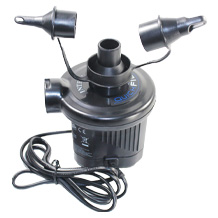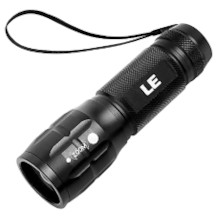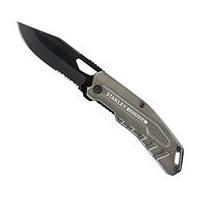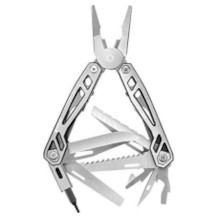Compressor cooler purchasing advice: how to choose the right product
- What you need to know
- Compressor coolers are small electricity-powered cooling options for food and beverages in the car, caravan or camper.
- They are ideal for camping vacations to sufficiently cool perishable food.
- The supply of electricity is indispensable for operation.
- Many models can be connected to both the wall socket and the 12-volt socket in the car. Some also support 24-volt on-board truck power.
- Compressor coolers stand out from other types of coolers in terms of price, but they cool reliably.
- Some models can not only cool, but also deep-freeze. Thus, up to minus 22 degrees Celsius are possible.
What is a compressor cooler?
Compressor coolers are mostly small, mobile cooling options for food and drinks on the go. Since they have a much more powerful cooling capacity compared to other coolers, they are especially suitable for cooling perishable goods on long car trips and camping. Thus, the food in the trunk of the car as well as in the caravan or camper remains edible for a long time. Whether meat, fish, vegetables, salad or medicines: The contents of compressor coolers are always perfectly protected – regardless of the outside temperature. In addition, even on warm days, a cool drink is always available.
For whom are compressor coolers suitable?
Coolers with compressor are suitable, for example, for campers who drive their caravan or motor home to campsites with electricity or pitch their tent on such. In general, users who often stay in very cold or warm climates or visit them when traveling should opt for a model with compressor technology. For a certain time, it is also possible to operate the device in your own car via the 12-volt connection, colloquially still called a cigarette lighter. This works permanently while driving as well as while stationary as long as the car battery supplies enough power.
Is there protection against deep discharge?
Compressor coolers use power from the car battery during 12-volt operation. However, this is also needed for the ignition. If the voltage drops below about 11.5 volts, the car will not start. Therefore, many of the models have a voltage monitor that stops the current draw and thus the cooling when it falls below a threshold value. This function protects you from “breaking down” with the car. Therefore, pay attention to this function when choosing a model. If the cooler does not have this function, you can retrofit a voltage monitor – also called a battery monitor – for your vehicle.
For which applications are compressor coolers rather not suitable?
Since the coolers require electricity to operate, they are not suitable for picnics in the park, trips to the lake or drink storage at the beach. Practical reasons also speak against it: Compressor coolers are much too heavy to carry them further distances without a car. In addition, the required poweris usually not available here. For these purposes, a passive cooler that keeps food and drinks cold only with the help of cooling elements or ice is more suitable. For camping off the grid, an absorber model that can be actively powered by gas is recommended.
What distinguishes a cooler from a refrigerator?
While coolers have a top-opening lid, the main characteristic for refrigerators is the front-opening door. Coolers have the great advantage that cool air is heavier than warm air, which rises to the top of the housing. The products in a cooler are therefore kept constantly cool even when the lid is opened. The disadvantage is the sortability: If something is searched for from the bottom of the box, it must first be rummaged around for a while and, in the worst case, the box must be cleared out completely.
For refrigerators, these attributes are reversed: They lose a much larger proportion of the cold when the door is opened. On the other hand, it is easier to find the foodstuffs you are looking for when you take them out through the door.
Different types of refrigeration
There are four types of coolers:
- Passive coolers
- Cooling boxes with Peltier technology
- Coolers with absorber technology
- Coolers with compressor technology
Passive coolers
The easiest way to explain the operation of passive coolers. These do not require energy in the form of electricity or gas, but onlykeep the contents cool through their insulation. Depending on the coolant, the cold can be kept for up to 22 hours, which makes the passive variants interesting at least for day trips. To keep food and beverages cold or chilled down to a small extent, previously frozen cold packs or ice cubes are required. So, strictly speaking, it is not a cool box, but a cold storage box. These boxes are much cheaper to buy than the other types and have a very low dead weight of about three to six kilograms.
Advantages
- No energy needed
- Without refrigerant
- Inexpensive to purchase
- Light
Disadvantages
- Content can be cooled down only a little
- Cold effect limited in time
Cooling boxes with Peltier technology
Peltier coolers use the effect of thermoelectricity: Two installed Peltier elements are energized. This creates a temperature difference that can be used for both cooling and heating. However, the efficiency is limited. More than 15 to 20 degrees Celsius deviation from the ambient temperature can not be achieved. Advantages are the space-saving design and the low dead weight.
Advantages
- Space saving cooling technology
- Without refrigerant
- Inexpensive to purchase
- Light
Disadvantages
- Mains or 12 volt power required
- Maximum 20 degrees Celsius below ambient temperature
- Low efficiency
Coolers with absorber technology
Absorber coolers can be operated with bothelectricity and gas. This makes them interesting for application locations where electricity is not available, such as at the campsite. Ammonia is used as the operating fuel. Heat is extracted from the interior through the absorption principle that gives it its name. This enables cooling temperatures that are up to 30 degrees Celsius below the ambient temperature.
It is important for these models to have adequate ventilation and safe exhaust gas discharge. Depending on the filling volume, the boxes weigh between 6 and 15 kilograms. Another disadvantage is that the absorber coolers consume more electricity than the compressor models. Also, the fact that this type must always be operated in a horizontal position, is unfavorable. A motorhome with this cooling technology would always have to be parked on a level parking lot. The models lose an enormous amount of cooling power when tilted.
Advantages
- Electricity and gas operation
- Cooling possible away from the power grid
- Temperature difference of up to 30 degrees Celsius achievable
Disadvantages
- High power consumption
- Safe ventilation and exhaust necessary
- Safe discharge of exhaust gases necessary
- Straight stand required
Coolers with compressor technology
Refrigeration units with compressor technology are known to many without them knowing it: Conventional household refrigerators work on this principle. The compressor extracts heat from the interior with the help of electricity and enables a very high cooling effect in comparison. Temperature differences of up to 50 degrees Celsius from the outside temperature are possible; some models can reach minus 20 degrees Celsius.
Since the compressor brings a high dead weight, most models weigh between 9 and 18 kilograms. Operation causes a noise of about 35 to 50 decibels: As with the household refrigerator, it occurs whenever the compressor needs to re-cool. These coolers are the most powerful, but also the most expensive on the market. Advantage: Operation requires less energy than absorber models. The fact that the compressors work in inclined position is also a big plus. In fact, this means that the car in which the cooler is located, does not have to stand straight.
Advantages
- Particularly large cooling or heating effect
- With many models freezer function
- Suitable for perishable food
- Lower power consumption than absorber models
- Cooling independent of ambient temperature
- Operation in inclined position possible
Disadvantages
- Mains or 12 volt power required
- Loud operating noise
- Heavy
- Expensive to purchase
How do compressor coolers work?
Compressor coolers are equipped with a compressor and a refrigerant just like “real refrigerators” in the kitchen. The coolant is compressed by means of the compressor. It is then vaporized, the resulting gas extracts the ambient heat and the interior cools down. This technology is particularly reliable, because the cooling effect by evaporation works independently of the ambient temperature. In addition, the technology is very potent: For example, the target temperature can be selected to the exact degree and even deep-freezing is possible.
Criteria decisive for purchase
After you have decided on a compressor model in terms of the type of function, it is advisable to make the choice dependent on a number of other criteria. These include, among others, the operating voltage, the filling volume and the volume of the operating noise.
Connection and voltage type
When choosing a model, it is advisable to make sure that, in addition to 230-volt operation, operation with 12 volts is also possible. Then the device will work not only near a power outlet, but also on the on-board power of a car. For truck drivers, the same is true for 24 volts, as this is the voltage used in most trucks. Although some models can also handle 110 volts, which would make them suitable for a trip to the USA, Mexico or Cuba, they are unlikely to be part of the checked baggage in most cases.
Useful capacity
Compressor cooler boxes with an internal volume of 35 to 40 liters are suitable as a backup or supplementary solution. Partly larger usable capacities, for example 70 liters, are available. Then the cooler is enough as the main unit for longer trips with several people.
The usable height is also interesting: Thus, about 28 centimeters in the interior is sufficient for most 1-liter bottles to be stored upright. On average, 1.5-liter bottles require 32 centimeters, while 2-liter bottles need as much as 38 centimeters.
Temperature range
When deciding on a purchase, pay attention to the information on the lowest temperature that can be reached. In this point, the individual models can differ from each other. While the issue of beverage temperature is a matter of taste, maintaining the cold chain is a must for many perishable foods. Meat should be stored at a maximum of 7 degrees Celsius, or better still a maximum of 4 degrees Celsius, so that bacteria multiply more slowly. This is especially true for poultry.
Some models allow for an even colder operating mode: The most powerful models reach temperatures as low as minus 22 degrees. If you want to refrigerate food and freeze other foods at the same time, reach for a dual-zone cooler. The desired target temperature can be set on all models using pushbuttons or a rotary control. These, as well as the temperature currently prevailing in the interior, can be read on a display.
Modern: Temperature selection via app
Some coolers offer the possibility to control the temperature via an app. For this, the smartphone or tablet has to be within close range, or ratherwithin Bluetooth range. Ultimately, this is a playful extra, but it does not offer a purchase-deciding advantage for operation. However, for quick function and temperature checks without having to bend down to the cooler or pull out a drawer, the remote control is certainly handy.
Operating volume
The volume of the compressor is a purchase criterion that should not be neglected for a refrigeration unit that is operated in a caravan or motor home. On average, a compressor cooler runs for 15 minutes per hour to maintain the desired temperature. If it stands near the bed or even at the headboard, sensitive people are quickly deprived of sleep.
The operating noise is between just under 40 and 44 decibels. What doesn’t sound like much of a difference at first glance is deceptive: A change of three decibels causes a doubling or even halving of the sound energy. During the startup process, the speakers are even a bit louder. So, if possible, choose a model with a low sound level indication on the decibel scale.
Power consumption
The power consumption of coolers with compressor is significantly lower than the absorber variants. For round-the-clock operation, the boxes require between 0.3 and 1.4 kilowatt hours, depending on the model and size. The compressor starts at regular intervals and switches off again after a few minutes. Since the range of power consumption is quite large, it is worth choosing a sufficiently large, but not oversized model for your own purposes.
For newly sold compressor refrigerators, the same labeling obligation with the EU energy label applies as for conventional refrigerators. The new label has been in effect since March. The devices classified with the letter A are the most energy efficient, devices with the efficiency class G have the highest energy consumption. In this way, consumers can compare more easily and quickly.
Dimensions
Most models have dimensions of about 65 x 40 x 40 centimeters. Thus they fit, for example, in the trunk of a station wagon or under the bed recess of the camper. Models with large payloads can be correspondingly larger.
Weight
The compressor accounts for a large proportion of the weight of the coolers. With an empty weight of 12 to 25 kilograms, the models are not particularly handy. However, they are not designed for hiking, but for standing operation in a vehicle. That is why values such as the interior volume or the efficiency of the cooler are more important.
Built-in coolers
In addition to free-standing variants that fit in the trunk of the car or in the camper, there are also those that can be built in, i.e. integrated into the kitchenette of a camper or caravan, for example. In most cases, the built-in variants are priced higher than the stand-alone units, but they take up less space and offer a tidy appearance.
Pullout and mounting
For coolers, which are attached to the top, there are special pullouts, which are often offered by the manufacturer with. By means of these, the cooling units can be stowed in a drawer in a motor home, for example, and conveniently pulled out. On the one hand, this saves space, and on the other hand, it allows food to be filled and removed both conveniently and clearly.
Basket inserts
Insert baskets make it easier to keep things tidy in the cooler. When users are looking for something specific, a removable basket makes this task much easier. In addition, there are foods that should not be at the bottom, the coldest point of the cooler, otherwise they will not be directly consumable or spreadable. For such products there are insert baskets or special compartments that allow to keep the distance from the bottom of the cooler. If there are even several baskets, organizing the refrigerated goods is even easier.
Interior lighting
Some models have interior lighting. This is a convenience feature that some manufacturers have integrated into the cooler. This makes it possible to locate a particular refrigerated item at dusk or at night without additional light.
USB socket
Some models have USB jacks on the outside of the case. These have no direct functional connection to cooling, but can be used to charge the batteries of consumers such as smartphones, tablets, laptops or navigation systems. This saves users an additional transformer that would have to be plugged into a socket.
Material
Many coolers are largely made of plastic, because the material is lightweight and durable. Aluminum variants are even more stable, but also add more weight. In the interior, rigid foam panels made of polyurethane (PU) are often installed, as they have very good insulating properties and guarantee the lowest possible heat loss. In addition, the material can be installed in a very space-saving way, leaving interior volume for food and beverages.
A well-sealed lid is essential for all types of coolers. It prevents the heat from escaping at the top. Thus, this not only ensures effective cooling, but also prevents the electricity bill from being overcharged by unnecessary additional cooling.
How can I keep power consumption as low as possible?
Since the operation of a compressor cooler can not only go into the money if used incorrectly, but when used on the car battery is also limited power available, some tips can help to use the freshness keepers as efficiently as possible:
- Operate in a sun-protected, well-ventilated place
- Open as rarely and briefly as possible
- Defrost regularly
- Select the highest possible cooling temperature
- Let cooked dishes cool down first

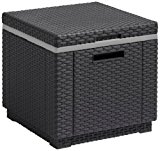
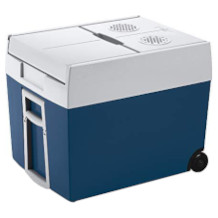
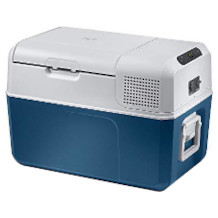
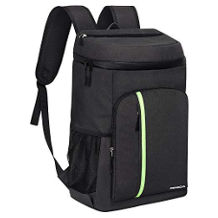
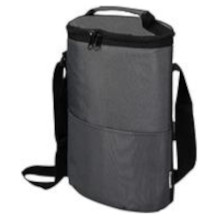









 41 reviews
41 reviews
